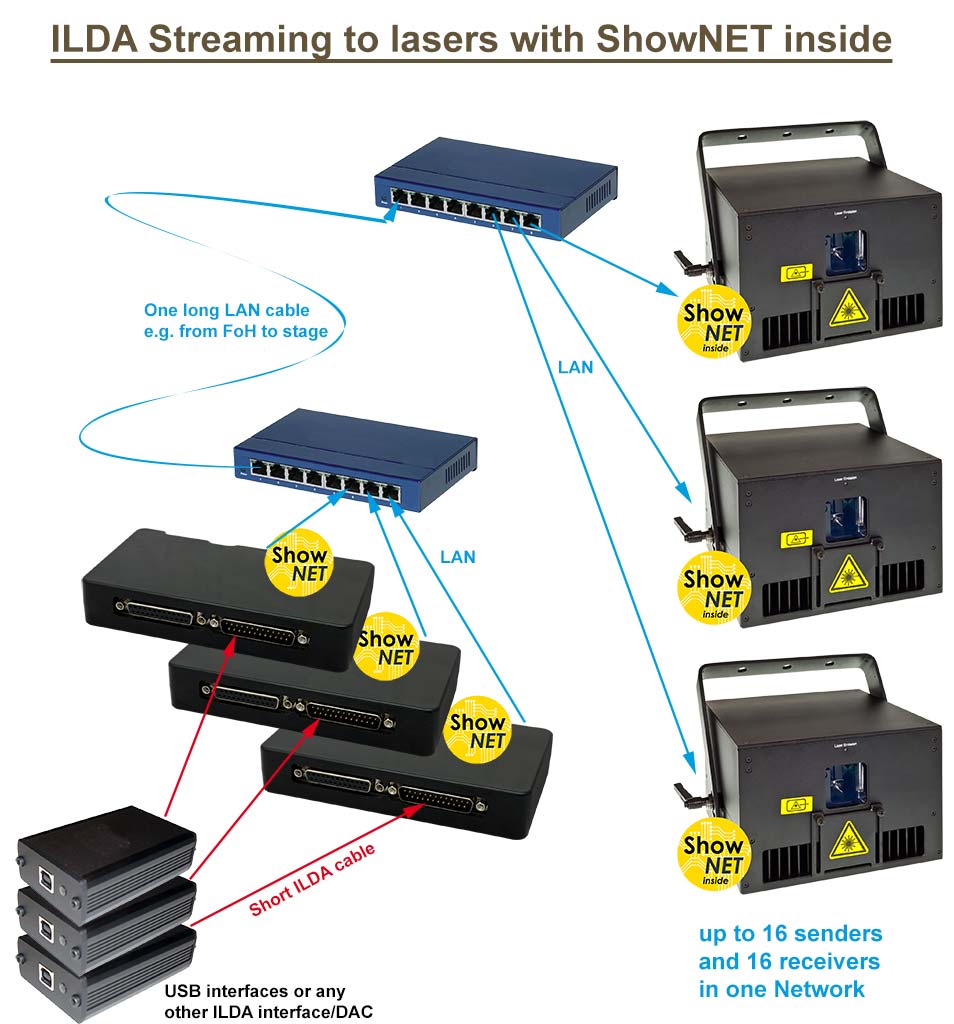ShowNET Feature: ILDA Streaming
ILDA Streaming is the real-time signal transmission of an ILDA signal via a combination of sender and receiver over network (LAN).
It is possible to use the ShowNET interfaces as senders or receivers for ILDA Streaming. Whereas the external ShowNET devices can act both as sender and receiver, the internal ShowNET boards focus on the receiver functionality.
This is how ILDA Streaming works:
The ILDA signal comes from a random DAC (e.g. FB3, Phoenix USB, etc.) and is feeded with a short ILDA cable to the sender. The sender transforms the signal to a digital network protocol and streams it to the network. The receiver gets the signal that was specified for it and transforms it back to the analog ILDA signal.
The advantage is, that the possible transmission distances of network signals is much longer and network cables are easily available all over the world. ILDA cables are rather limited in their maximum possible length, so the physical limits are quickly reached at large scale productions. ILDA streaming is a good and stable option to easily extend the signal transmission distances. This method has been explicitly developed for show laser light applications, so it is superior to USB->LAN converters if it comes to laser applications.
ILDA Streaming with systems with more than 3 color channels:
If an ILDA signal with more than three color channels is to be transmitted (which is only the case with top professional laser systems, usually with OPSL sources), both sender and receiver need to be capable of handling a six color channel signal.




